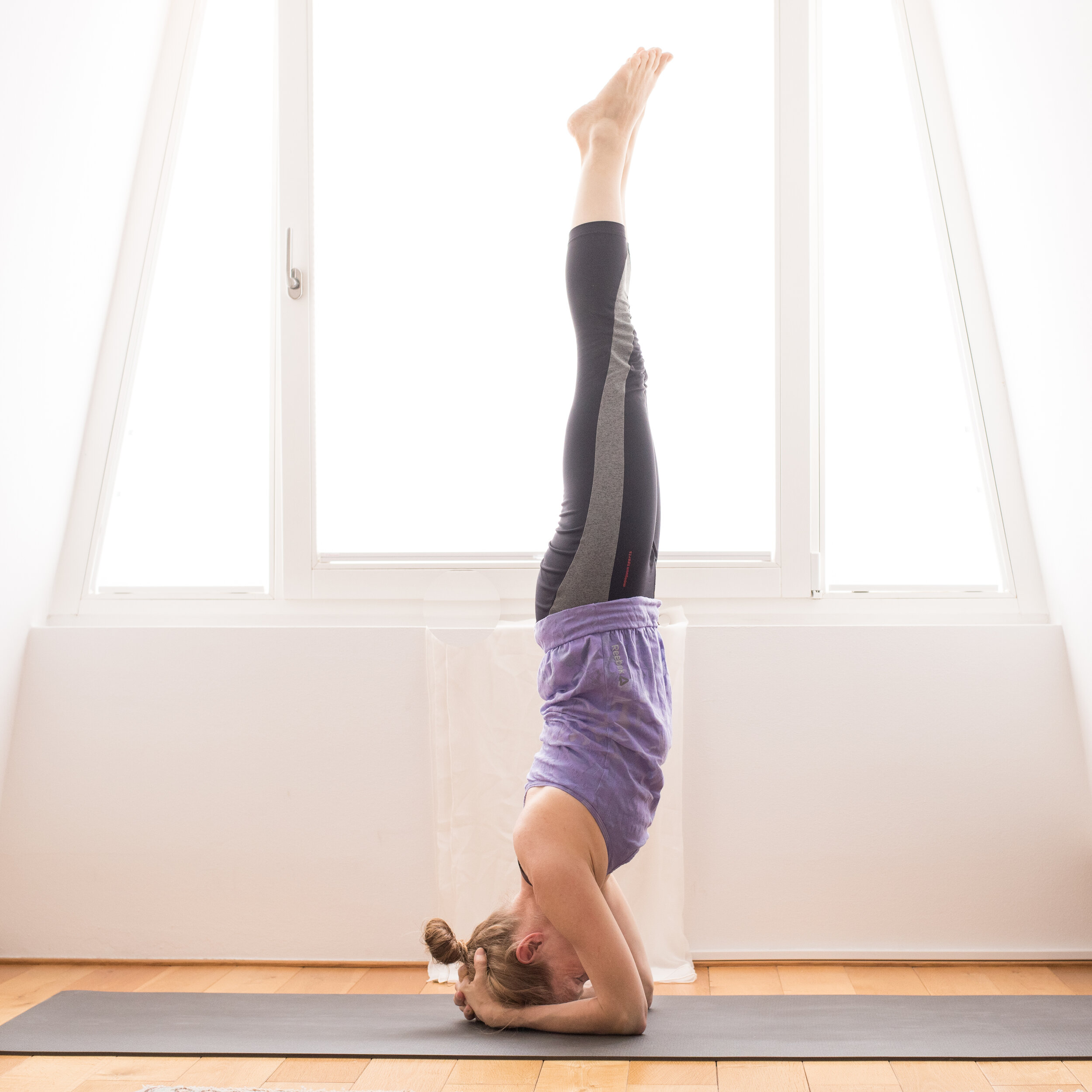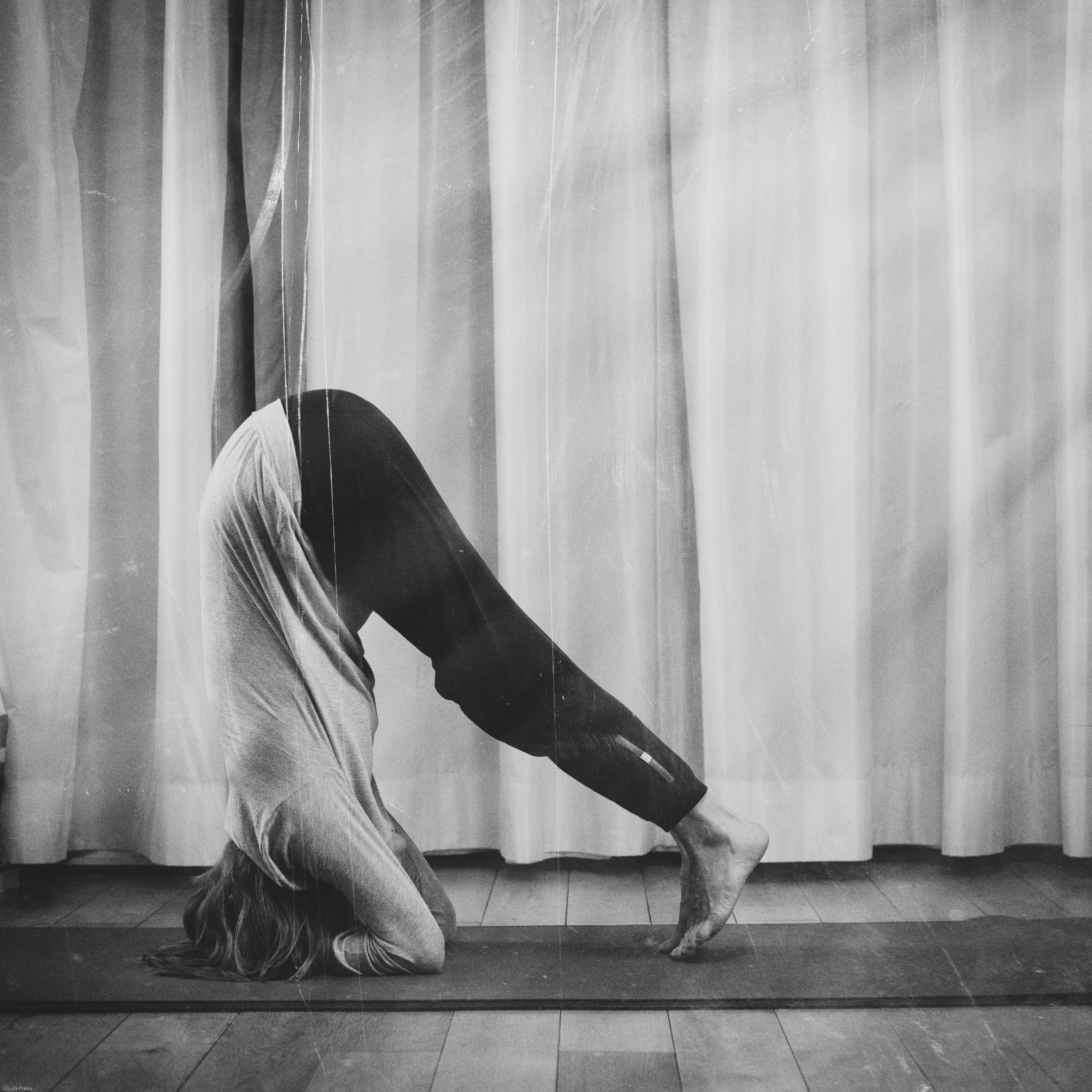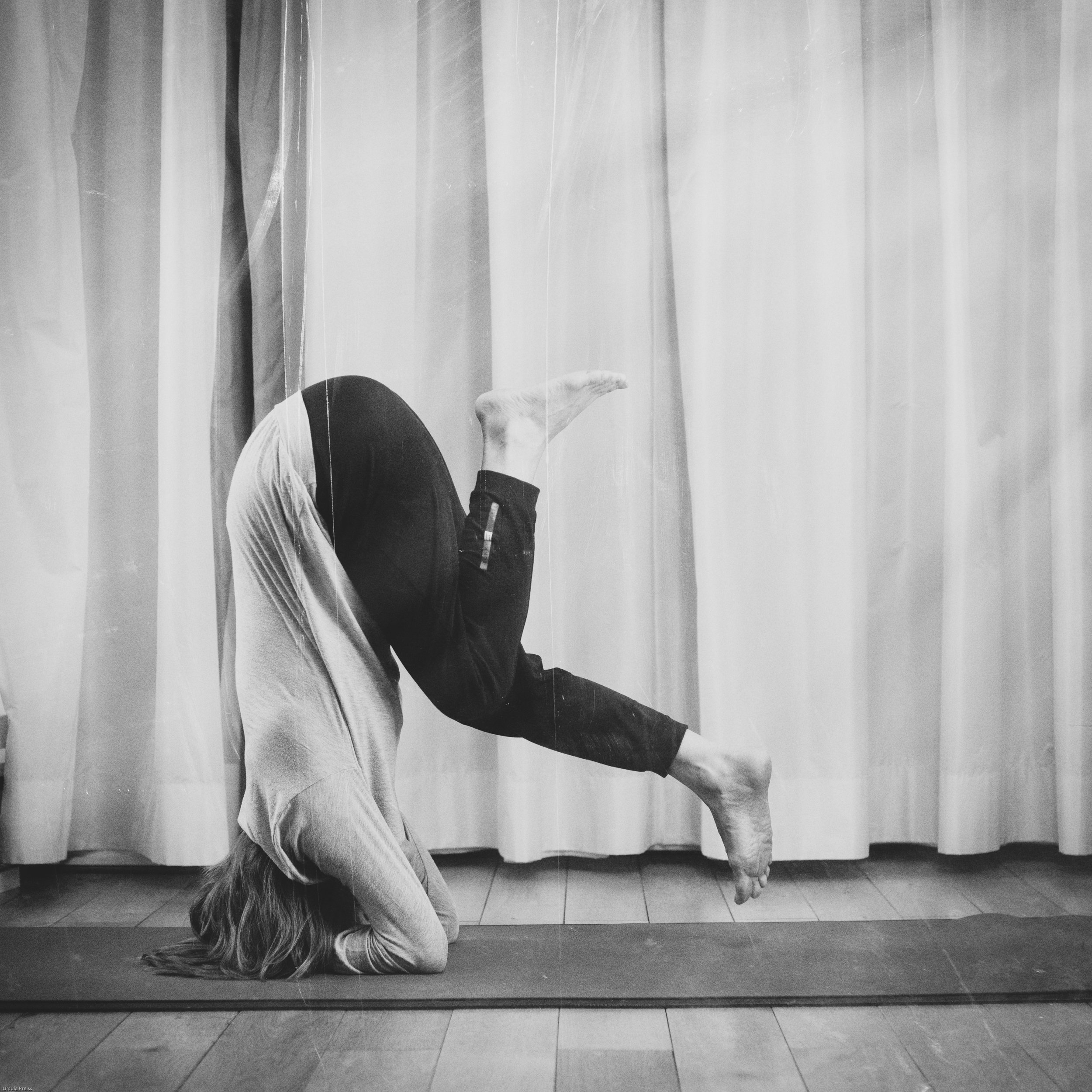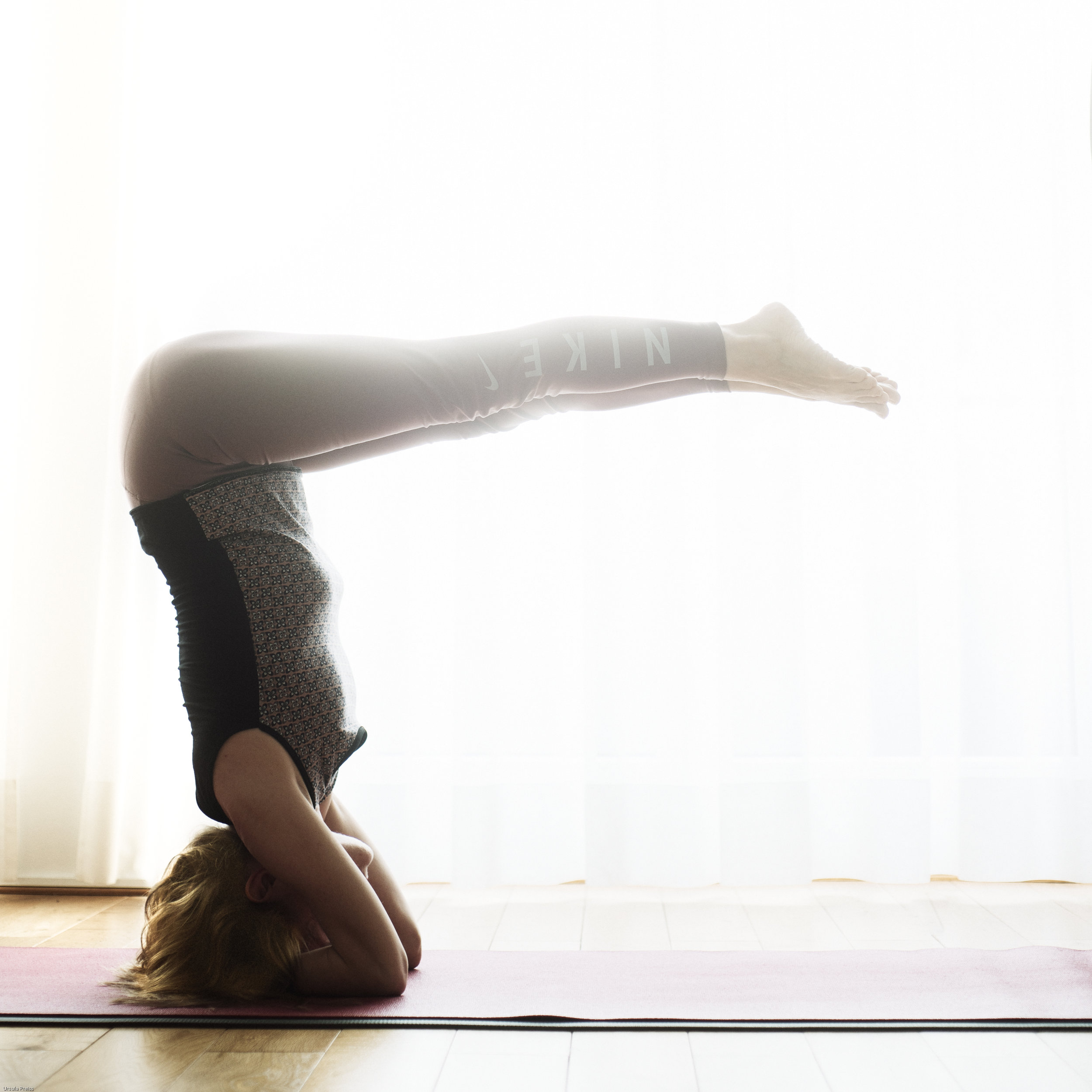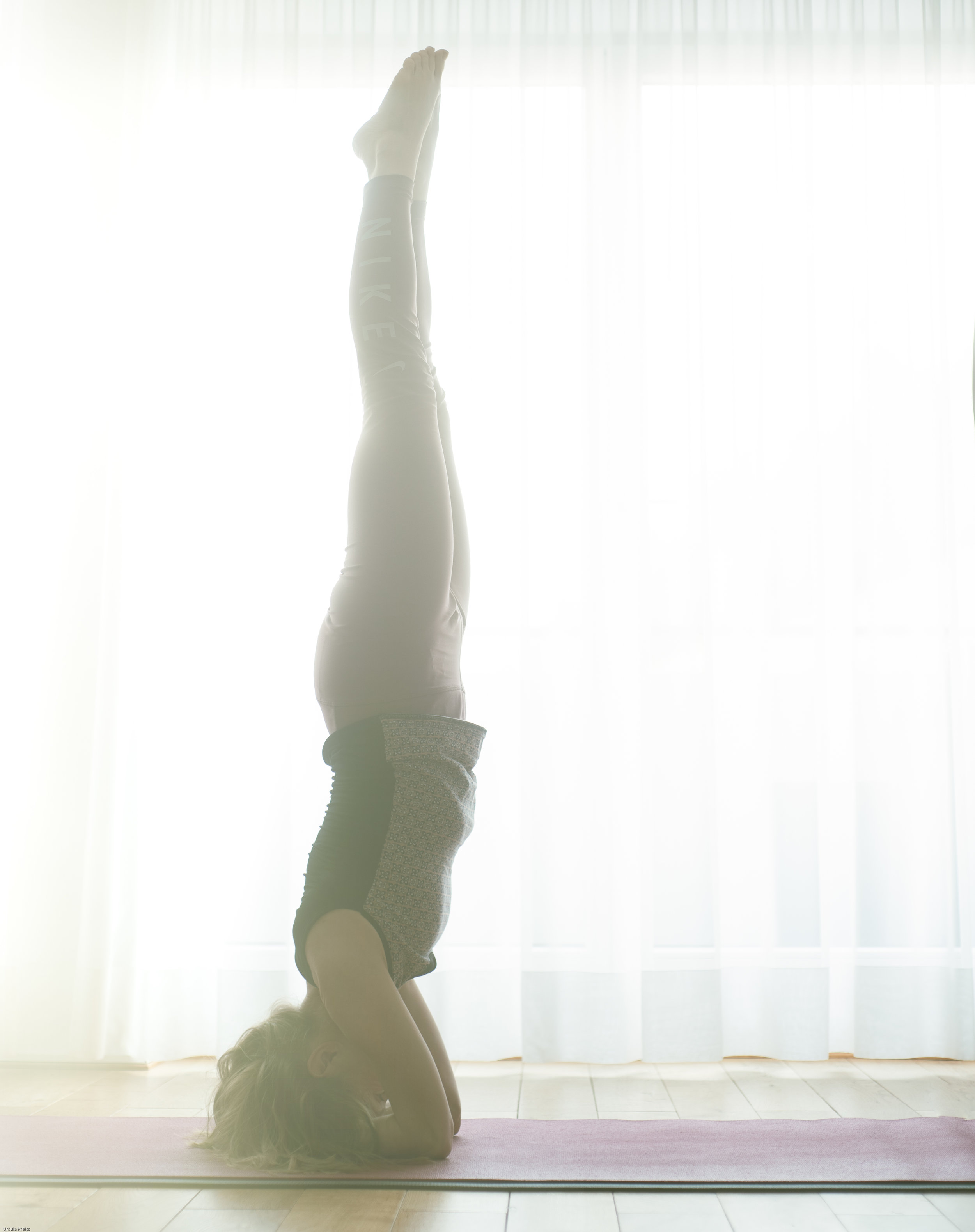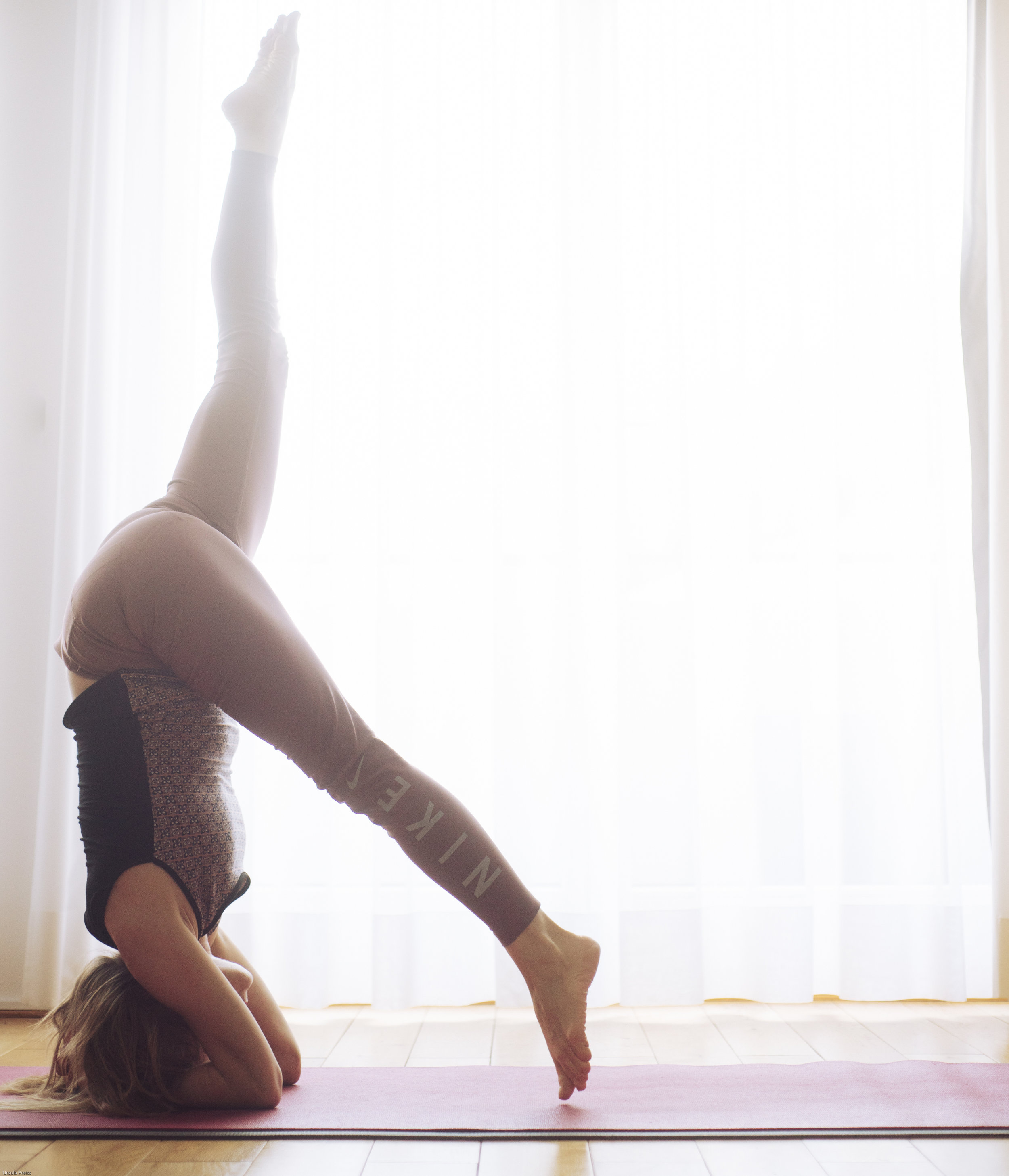Sirsasana, Okt 2020
Last year I went to Sivananda yoga classes. Sirsasana is the first asana of the series they teach. It’s supposed to be held for 5 minutes. In the beginning of each class the mind and body are still fresh and full of energy. It was easier to hold this asana longer than I usually do when I practice Ashtanga yoga. In the Ashtanga yoga series headstand is an asana of the closing sequence. After an exhausting practice I only wanted to finish my practice. Five breaths and out I was of this pose……
To hold an asana for 5 or 10 breaths or 5 minutes is a difference. If one holds headstand for 5 breaths it’s doable with a bad posture. It’s possible to compensate a bad technique with strength. If headstand is held longer this becomes difficult. The more correct the headstand is performed the easier it is and the easier it also is to hold it longer.
The one main mistake I see everywhere in classes and online is that the elbows are too far away from each other. My arms are almost parallel. They don’t form a triangle. When the bandhas (pelvis floor and abdomen) are engaged balancing is easier.
The Sivananda yogis offer headstand workshops that last 30 minutes. Within this time frame the students learn headstand. I learned it that way. Thank you it saved me a lot of time and frustration. In order to learn headstand one must want it. Someone must teach the correct technique. A bit of strength is necessary, too. That’s all.
To hold this pose up to 10 minutes is something else as written already.
My goal is to hold sirsasana for 5 minutes. Only when held longer this inversion can benefit for the body.
I found out yesterday:
My fingers hurt due to my rings.
To set a timer for 5 minutes without getting informed about the time is as if I were in a time vacuum.
Then I used a timer that indicates 5 intervals. It’s an App called multi timer that accompanies my practice these days. This interval timer is very useful.
I held sirsasana for 2 long minutes. I’m curious what is possible today.
I’m sure that holding sirsasana longer will improve this pose. It’s also a preparation for the more advanced inversions like pincha mayurasana.
The Sivananda yogis know a lot of variations, mainly the legs are in different positions.
The Ashtanga yogis know also a lot of variations, yet mainly the arms are in different positions.
Let’s keep practicing.

